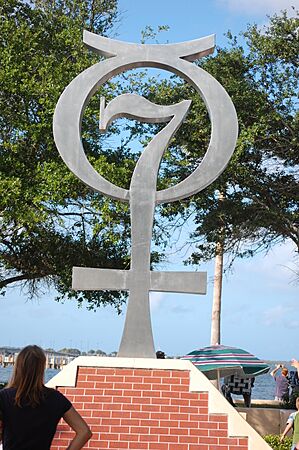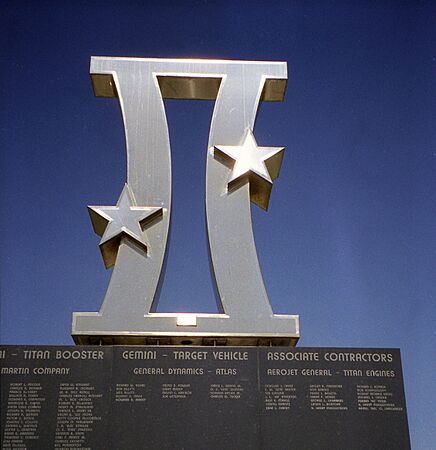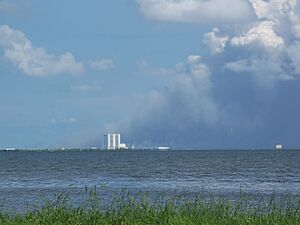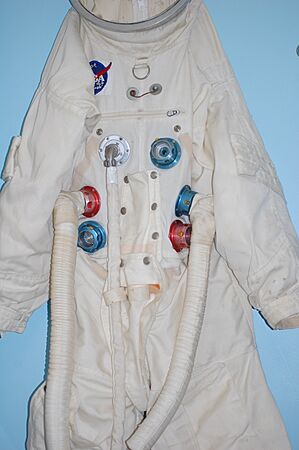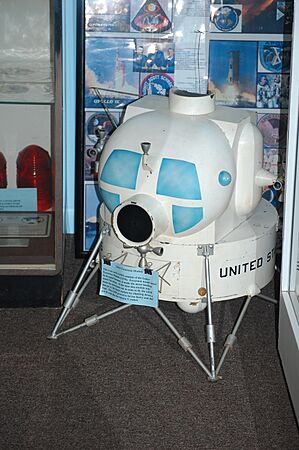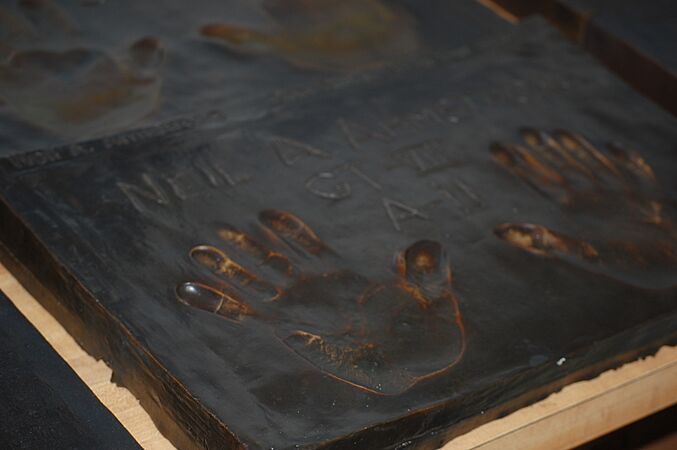American Space Museum facts for kids
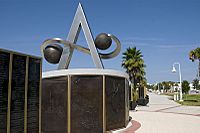
Apollo Monument in Space View Park
|
|
| Established | 1994 |
|---|---|
| Location | Titusville, Florida, USA |
| Type | Space museum and outdoor monuments |
The American Space Museum is a cool place in Titusville, Florida. It's a museum that celebrates America's journey into space! It also includes the US Space Walk of Fame. This is an outdoor area along the Indian River. It honors the brave astronauts and all the amazing people from NASA and other companies. These people helped make American space travel happen. You'll see monuments around a pool. They are dedicated to the early space missions like Mercury, Gemini, Apollo, and the Space Shuttle. The museum itself has many space-related items and is found at 308 Pine Street.
Contents
What the Museum Does
The museum has a special goal: "Preserving Achievement; Inspiring Innovation." This means they save important space history, items, and stories. They show these things to inspire young people like you. They want you to invent, explore, and discover new things. The Space Walk of Fame is unique. It honors both astronauts and the many people who worked behind the scenes. These people helped America become a leader in space exploration.
Space Monuments and Memorials
The monuments at the Space Walk of Fame were built by a group called the US Space Walk of Fame Foundation (USSWOFF). This group includes community leaders and people from the space industry. The foundation is also creating a huge list of space workers. It has over 10,000 names so far! They also record stories from people who worked on early American space programs.
History of the Space Walk
The USSWOFF worked with the City of Titusville to create the US Space Walk of Fame. It was part of a big plan to improve Titusville's downtown riverfront. The idea came from Dr. Doyle E. Chastain in 1988. He wrote a letter to the city suggesting the project. The city liked the idea because they wanted to make the riverfront even better. This led to the creation of the US Space Walk of Fame Foundation.
Many volunteers, including space pioneers, helped start the USSWOFF. The city provided the park's basic setup. The foundation raised money for the monuments, plaques, and other space-themed items. People can even have names of space workers engraved on the monuments. This helps honor their contributions.
In July 1994, the city opened the new riverfront area. It was named Space View Park. This park became the main spot for the US Space Walk of Fame. The Mercury Monument was dedicated on May 12, 1995. It has bronze handprints of six of the original seven Mercury astronauts. The Mercury mission symbols were shown on May 23, 1997. This monument is a copy of one at Launch Complex 14.
Work began on the Gemini Monument on July 19, 1996. The Gemini Monument was officially opened on November 7, 1997. The Apollo Monument started construction on July 16, 1999. This was exactly 30 years after the launch of Apollo 11. That day kicked off a week-long celebration of the first Moon landing. The Apollo Monument was dedicated on July 17, 2009. Apollo 15 astronaut Al Worden was there. The Gemini and Apollo monuments also have bronze handprints of astronauts who flew those missions. The Space Shuttle monument was dedicated in 2014.
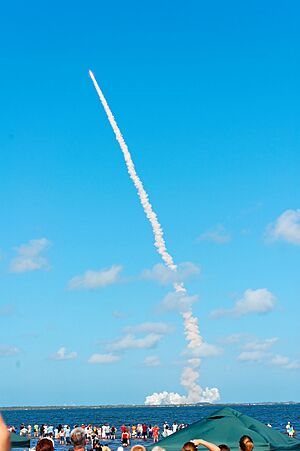
Inside the Museum
The American Space Museum is located nearby at 308 Pine Street. It shows America's history in space exploration. You can see hundreds of items there. These include photos, actual space equipment, flight suits, and even Space Shuttle tiles. There are also space patches and pins. Many of these items come from the personal collections of space workers. The museum also has launch consoles from Launch Complex 36. The museum was called the U.S. Space Walk of Fame Museum until 2016. That's when its name changed to the American Space Museum.
In 2016, the museum updated its exhibits. They added new signs, more artifacts, and interactive displays. The museum is also adding 3D printers and computers. These new technology exhibits are designed especially for children. The museum also runs a STEAM space program. This program focuses on science and technology for kids.
-
An early model of the Apollo Lunar Module
-
Neil Armstrong's hand prints
More to Explore


